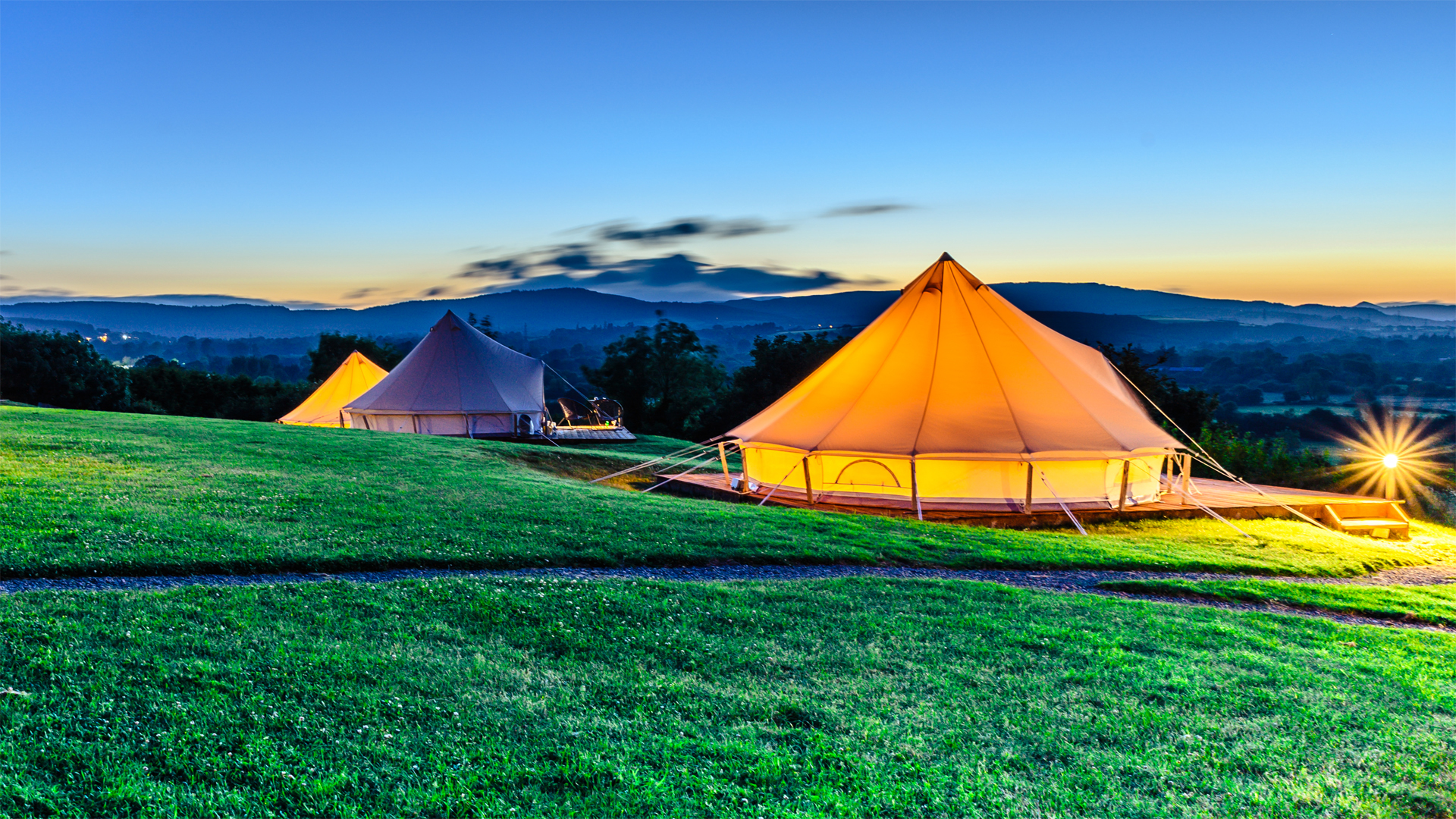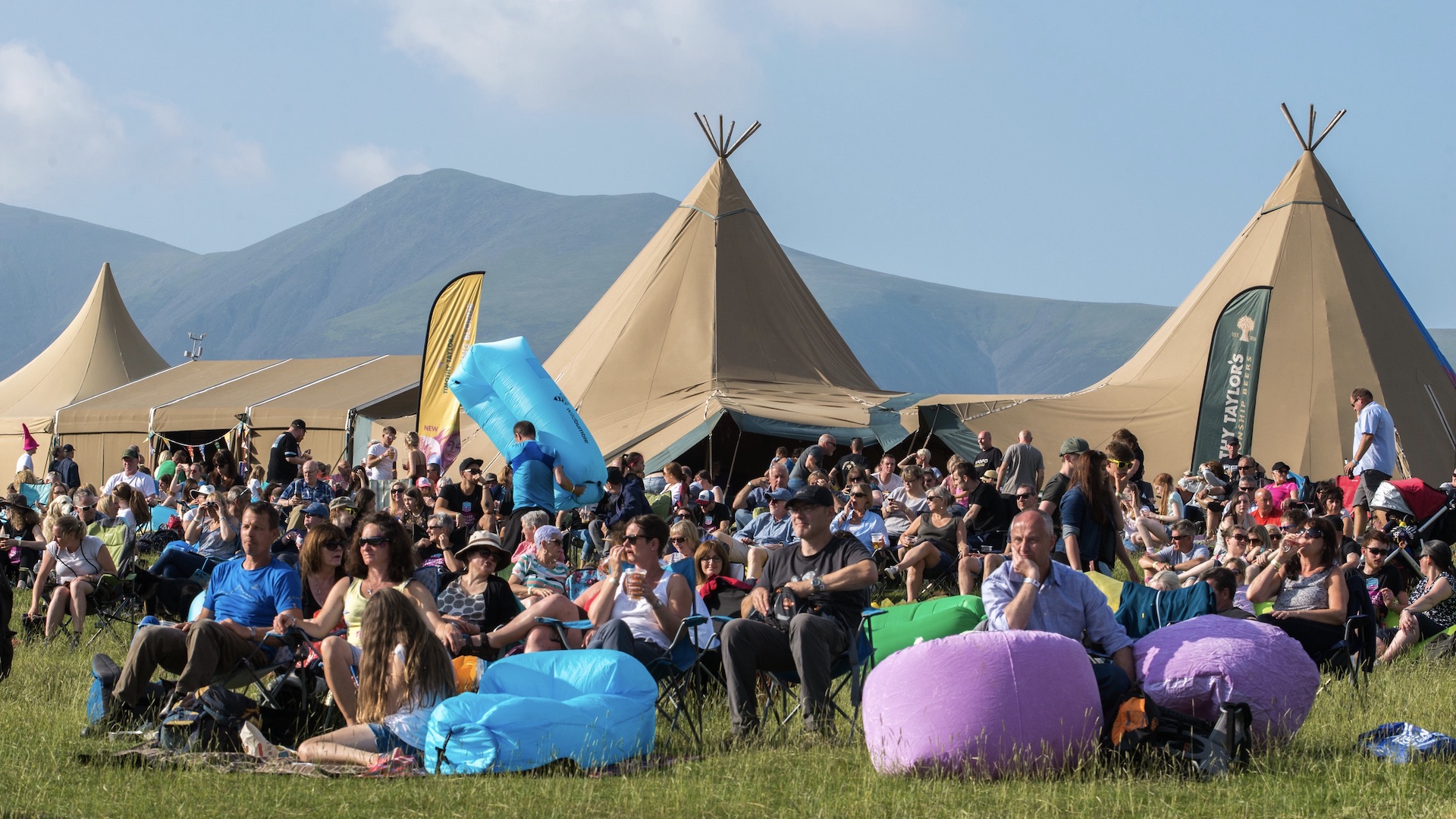In defence of glamping: why it's about time you gave luxurious camping a chance
Die-hard campers need to kick back, relax – and learn to love the luxury of glamping. After all, it’s no sin to sleep outside in comfort sometimes...

Glamping is still on the rise, much to the chagrin of die-hard campers who consider it too far removed from all the things that make backcountry camping so wonderful in the first place. The freedom to pitch where you will and the low cost access to the great outdoors are just two qualities that maintain the traditional camping trip's universal popularity.
Glamping is, admittedly, quite far removed from all of that. Many stays will set you back more than a decent hotel and, by its very nature, you are restrained to whatever patch of land your luxurious pod, converted helicopter or lavish tipi adorns. It's no wonder it's seen by some as a bit of a hipster fad for poshos who've never assembled a tent pole in their lives. But, isn't it okay that both camping and glamping exist side by side?
Don’t get me wrong, I love pitching my camping tent somewhere adventurous. I adore camping’s no-frills, wild side. But! I also love a good glamp. I too eschewed glamping as an overpriced holiday for rich kids – until a camping trip around the Outer Hebrides with two friends one June. We wild camped for 10 days, getting filthier, soggier and finally, downright miserable when torrential rain and bitterly chill weather descended on us for three unrelenting days...
Meet the expert

Sian loves camping in all its forms, from a minimalist mountain wild camp to a luxurious glamping experience with hot tubs and a wood-burning stoves. She's tested countless tents in her time and knows what makes a quality shelter for the backcountry elements.
Today's best deals
The case for glamping
- With hot showers, wood-burning stoves and double beds, glamping is much more comfortable than standard camping
- It's the ideal way to introduce less outdoorsy friends to the great outdoors

I was Googling ‘how do I know if I have trench foot’ in a café, looking out at a sheet of rain, when we decided to also look online for some kind of local respite. I have never been more grateful for any shelter than the charming bell tents at Lickisto Blackhouse on the Isle of Harris. These simple canvas tents look out to sea, and inside each one there’s a big double bed facing a wood-burning stove. We had soon draped many pairs of socks on the fireguard and jumped into – untold paradise! – a hot shower. I never wanted to go outside again.
Ever since, I’ve found glamping, especially DIY glamping (where you bring your own bell tent, blankets and other creature comforts along) a great way to get my non-outdoorsy friends into the great outdoors. As I type this, I’m surrounded by sleeping bags and gas canisters, ready to pack up the car boot and head to Cornwall, the sunny county in England's southwest corner, to celebrate my friend’s 30th birthday. She wouldn’t be caught dead in a bivy sack – but a sunny weekend on the Roseland Peninsula, staying in our canvas bell tent complete with bunting, birthday cake and flushing loos nearby? She’ll be in heaven.
The benefits of glamping in winter
- Traditional camping in winter is cold, hard work and can be dangerous
- Glamping allows you to access the winter while still having a warm place to rest

I also like to fight glamping’s corner as a way to get out more in winter. I’ve wild camped in the cold in some of Scotland and North Wales’ most epic mountain landscapes – and while there’s nothing like the jaw-dropping beauty of zipping open your tent to a frost-clad landscape, cold-weather camping is seriously hard work. It’s exhausting – and positively dangerous for inexperienced people – trying to keep warm outdoors when the mercury falls, so many won’t venture out to sleep out-of-doors at all once winter comes around.
Glamping, on the other hand, is the perfect way to sleep in the wild in all seasons, with a warm fire to fall asleep by and an eco shower ready in the morning. There’s nothing like a bracing cold hill walk with the frost nipping at your toes – if you’ve got a warm, cosy yurt complete with a crackling wood stove to go home too.
All the latest inspiration, tips and guides to help you plan your next Advnture!
Glamping at festivals
- Glamping at a festival is much more pleasant than the usual tightly-packed tent fields and toilets

And glamping comes into its own where the trend was arguably born – at festivals. If you can afford to swap the tent gulag fields and the horror that is Glastonbury’s toilets for a cozy tipi and a flushing loo, why on earth wouldn’t you?
Yes, glamping is more expensive than camping. No, it’s by no means rough and ready. But it’s a wonderful way to sleep out in nature – and to get more people to learn about the joys of the great outdoors. Now please excuse me while I grab my hipster friends and hightail it for the nearest yurt.
An award-winning travel and outdoors journalist, presenter and blogger, Sian regularly writes for The Independent, Evening Standard, BBC Countryfile, Coast, Outdoor Enthusiast and Sunday Times Travel. Life as a hiking, camping, wild-swimming adventure-writer has taken her around the world, exploring Bolivian jungles, kayaking in Greenland, diving with turtles in Australia, climbing mountains in Africa and, in Thailand, learning the hard way that peeing on a jellyfish sting doesn’t help. Her blog, thegirloutdoors.co.uk, champions accessible adventures.
